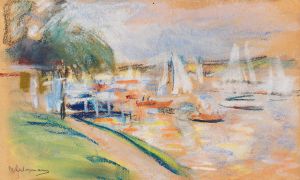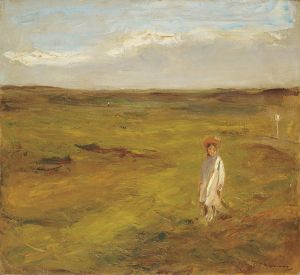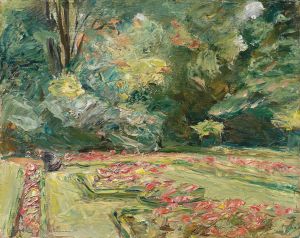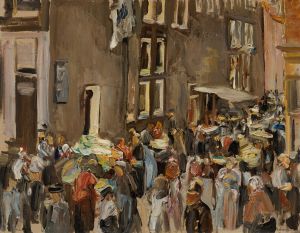
Segelboote Am Wannsee
A hand-painted replica of Max Liebermann’s masterpiece Segelboote Am Wannsee, meticulously crafted by professional artists to capture the true essence of the original. Each piece is created with museum-quality canvas and rare mineral pigments, carefully painted by experienced artists with delicate brushstrokes and rich, layered colors to perfectly recreate the texture of the original artwork. Unlike machine-printed reproductions, this hand-painted version brings the painting to life, infused with the artist’s emotions and skill in every stroke. Whether for personal collection or home decoration, it instantly elevates the artistic atmosphere of any space.
"Segelboote Am Wannsee" (Sailboats on the Wannsee) is a painting by the German artist Max Liebermann, created in 1925. Max Liebermann (1847-1935) was a leading figure in the German Impressionist movement and is often regarded as one of the most significant painters of his time. His works are known for their vibrant depiction of everyday life and landscapes, often capturing the essence of light and atmosphere.
The painting "Segelboote Am Wannsee" depicts a serene scene on the Wannsee, a popular lake located in the southwestern part of Berlin. The Wannsee was a favored leisure destination for Berlin's residents, especially during the late 19th and early 20th centuries. Liebermann himself had a villa on the shores of the Wannsee, which he used as a summer residence and studio. This proximity allowed him to frequently capture the changing moods and activities around the lake.
In "Segelboote Am Wannsee," Liebermann employs his characteristic loose brushwork and a light palette to convey the tranquil and leisurely atmosphere of the scene. The painting features several sailboats gliding across the calm waters of the lake, with the distant shoreline and trees providing a picturesque backdrop. The composition is balanced, with the sailboats creating a sense of movement and dynamism, while the still water and sky evoke a sense of peace and relaxation.
Liebermann's technique in this painting reflects his Impressionist influences, particularly in his use of light and color. The shimmering reflections on the water and the dappled light filtering through the trees demonstrate his keen observation of natural light and its effects on the landscape. The overall effect is one of harmony and natural beauty, capturing a moment of quiet enjoyment in a natural setting.
"Segelboote Am Wannsee" is part of Liebermann's broader body of work that often focused on scenes of leisure and recreation. His paintings from this period frequently depict people engaging in outdoor activities such as boating, swimming, and picnicking, reflecting the growing middle-class leisure culture of the time. These works are celebrated for their ability to capture the spirit of the era and the simple pleasures of life.
Max Liebermann's contributions to art extend beyond his paintings. He was also an influential figure in the Berlin Secession, an artists' association that sought to promote modern art in Germany. As a prominent member and later president of the Secession, Liebermann played a crucial role in shaping the direction of German art in the early 20th century.
Today, "Segelboote Am Wannsee" is recognized as an important example of Liebermann's work and his ability to capture the beauty of everyday moments. The painting is held in high regard by art historians and continues to be appreciated by audiences for its artistic merit and historical significance. Liebermann's legacy endures through his extensive body of work, which remains a testament to his skill and vision as an artist.


















